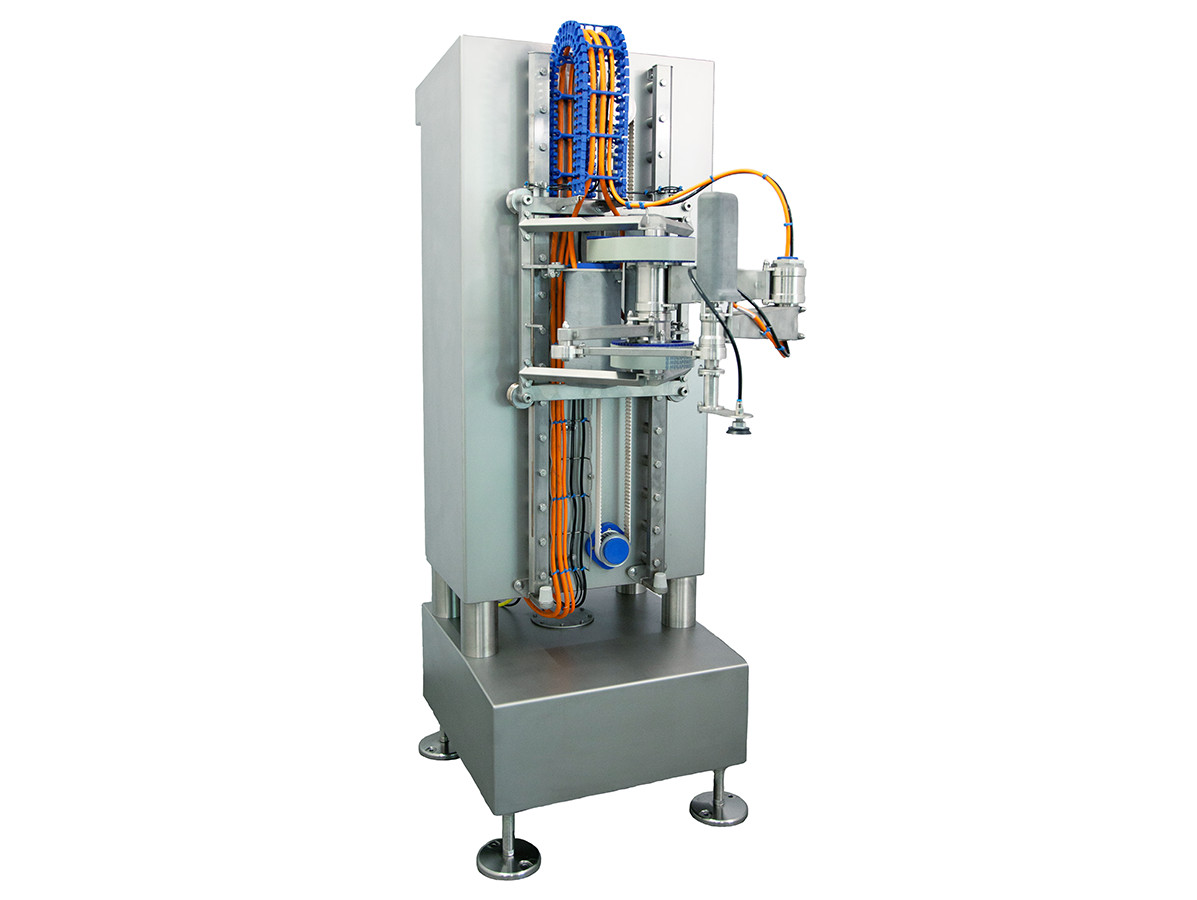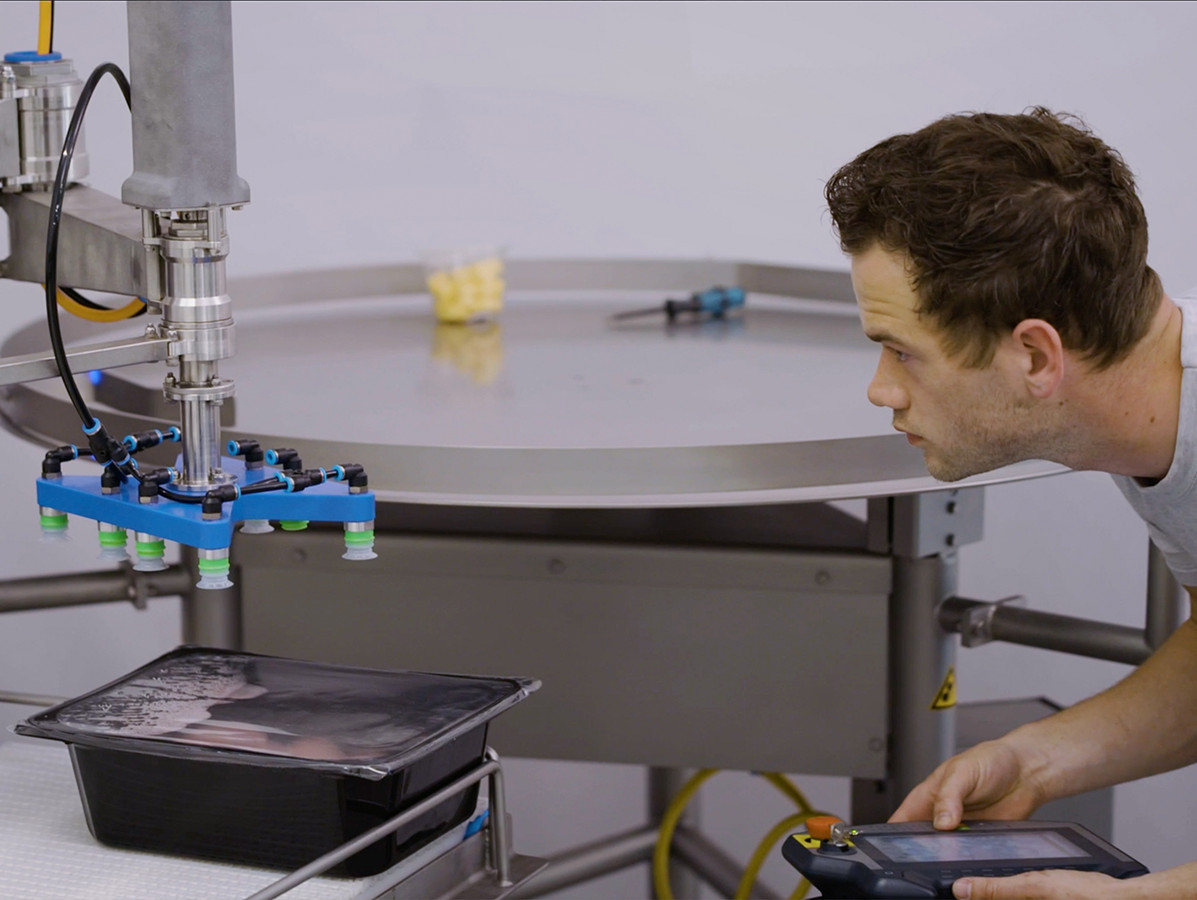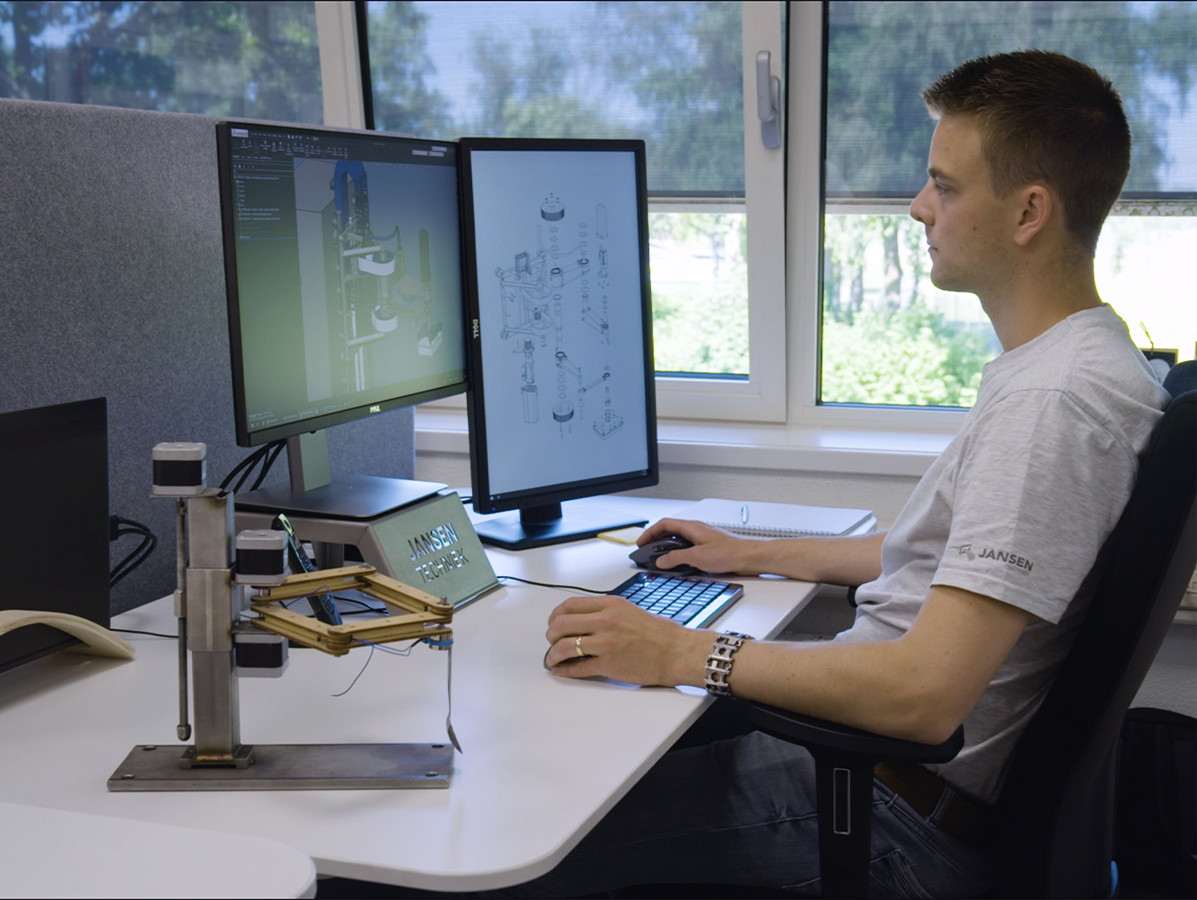
Limited choice of materials makes robotisation a challenge in the food industry. Two employees at Jansen Techniek did not give up and developed R-OP, a unique pick & place robot that replaces a rotary table and a person.
It''s never sick, does the same job for hours on end without a break, and is easy to move around. R-OP (short for Robotic OPerator) is the latest member of Jansen Techniek. The Putten based company offers progressive, technical solutions for the entire food industry. "Our roots are in the poultry industry, but nowadays we also supply to the meat, fish, agriculture and bakery industries," says founder and owner Jannes Jansen. He knows the developments and challenges in the sector like no other. The same applies to employee Corwin van den Bor, an electrical service technician who often visits customers: "I noticed that fully automated lines are doing the work everywhere, but at the end of such a line, instead of a robot, there is a person who picks up a package from the turntable and puts it in a crate. Of course, there is a reason for this: all machines and technology in the food industry must be washdown, i.e. made of stainless steel. But that material is weak and heavy. It is therefore a challenge to make a strong and fast robot out of stainless steel. It's easier with high strength steel, for example, but that material corrodes quickly."
According to Jannes, the limited choice of materials explains why robots are hardly used in the sector at all: "In all recent reports of major banks you can read about the development of robotisation in various industries, but the food sector is lagging far behind. Standard robots, that are used in other branches, do not have a long life in the wet industry. But the industry is facing a major shortage of employees. And, given the physically demanding and monotonous work, there is also a shortage of staff due to physical problems.

Corwin van den Bor testing with R-OP
Corwin was willing to take on the challenge of developing a robot that was suitable for the food industry. So about four years ago, he approached his colleague, engineer Dennis Bouw. He was willing to help him with a scale model. Together they looked at several models. Van den Bor: "In the car industry, robots are used that we had in mind, only they are all six-axis. For our model, only three or four axes are needed. So it really had to be a unique design." The engineering was in Dennis' hands; Corwin ordered motors and wrote the software himself. Two months later, the scale model was built. The young colleagues dreamed of a professional model. Dennis: "How cool is it to develop a robot that will be used by customers in the future?
Meanwhile, owner Jansen also heard about the idea. With great pride: "Corwin and Dennis' plan is typical of the people who work here: dynamic, enthusiastic and with great passion for our profession. Jansen released the budget and the gentlemen could get to work. No sooner said than done? Not exactly, says Dennis: "We looked carefully at what the market needs. The combination of required features for the robot - speed, hygienic material, complete washdown, easy to move, small footprint - was a challenge. For example, the robot also had to be able to work with bare products. The bearings therefore also had to be made of stainless steel. But since that material is not strong enough, developing it took a lot of time. And everything had to be developed by ourselves because the product we wanted did not yet exist. On top of that, current projects naturally took precedence."

Dennis Bouw working on engineering
Some four years after the scale model was built, R-OP was finally a fact last spring. Advanced techniques were used for the construction. "The stainless steel construction arms are partly 3D printed, just like the plastic motor caps. The robot is easy to operate thanks to very intelligent software. Learning the positions, for example, is very easy. The interface between operator and robot has been well designed," says Corwin.
The robot, easily movable by forklift or pallet truck, can process up to 120 picks per minute, depending on the stroke and weight. Salmon fillets, chicken thighs, biscuits and courgettes; up to five kilos, R-OP can pick all kinds of foodstuffs, packaged or unpackaged, from the line and place them in a crate. Jannes: " This way, the robot can replace a turntable and a person. There is also the option of adding vision technology, which, for example, performs an end-of-line inspection and recognises the position of products. This allows us to add all the benefits of humans to R-OP."
Source: Vakblad Voedingsindustrie 2021